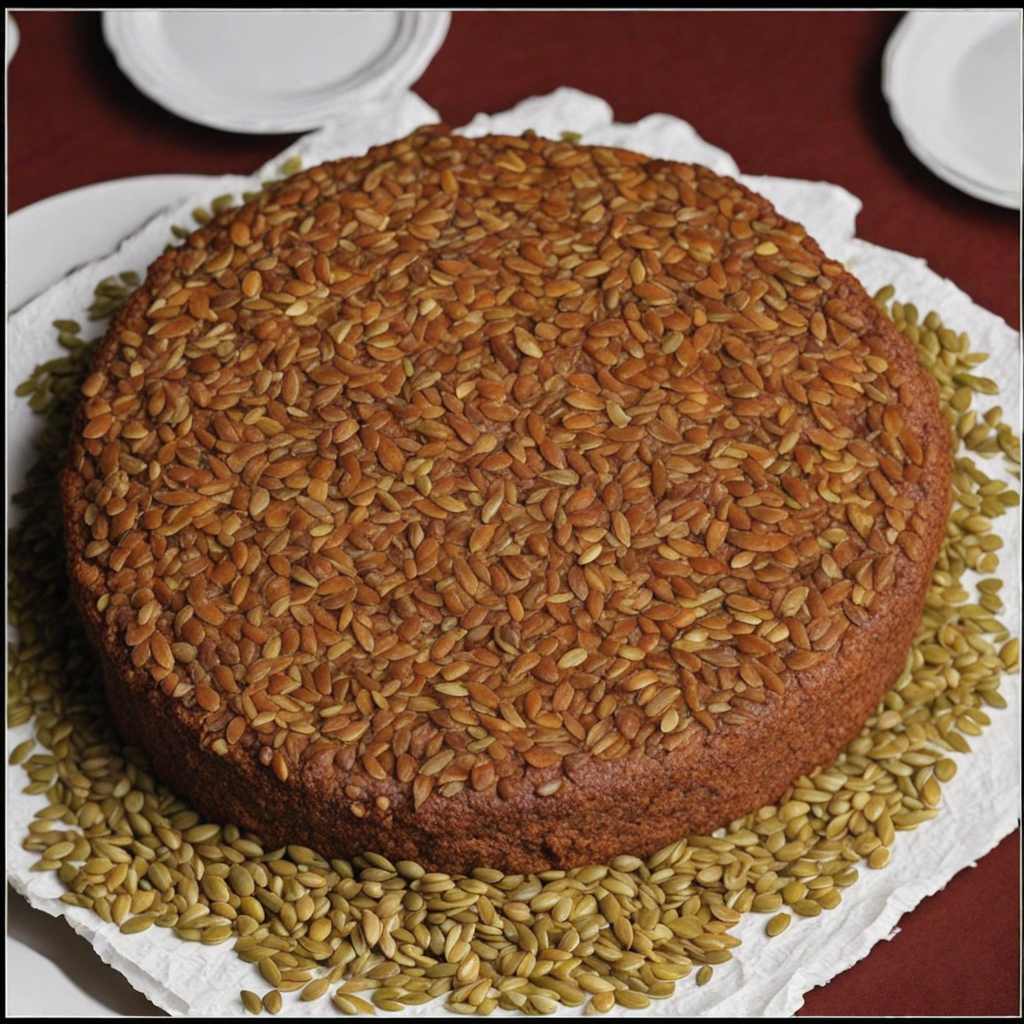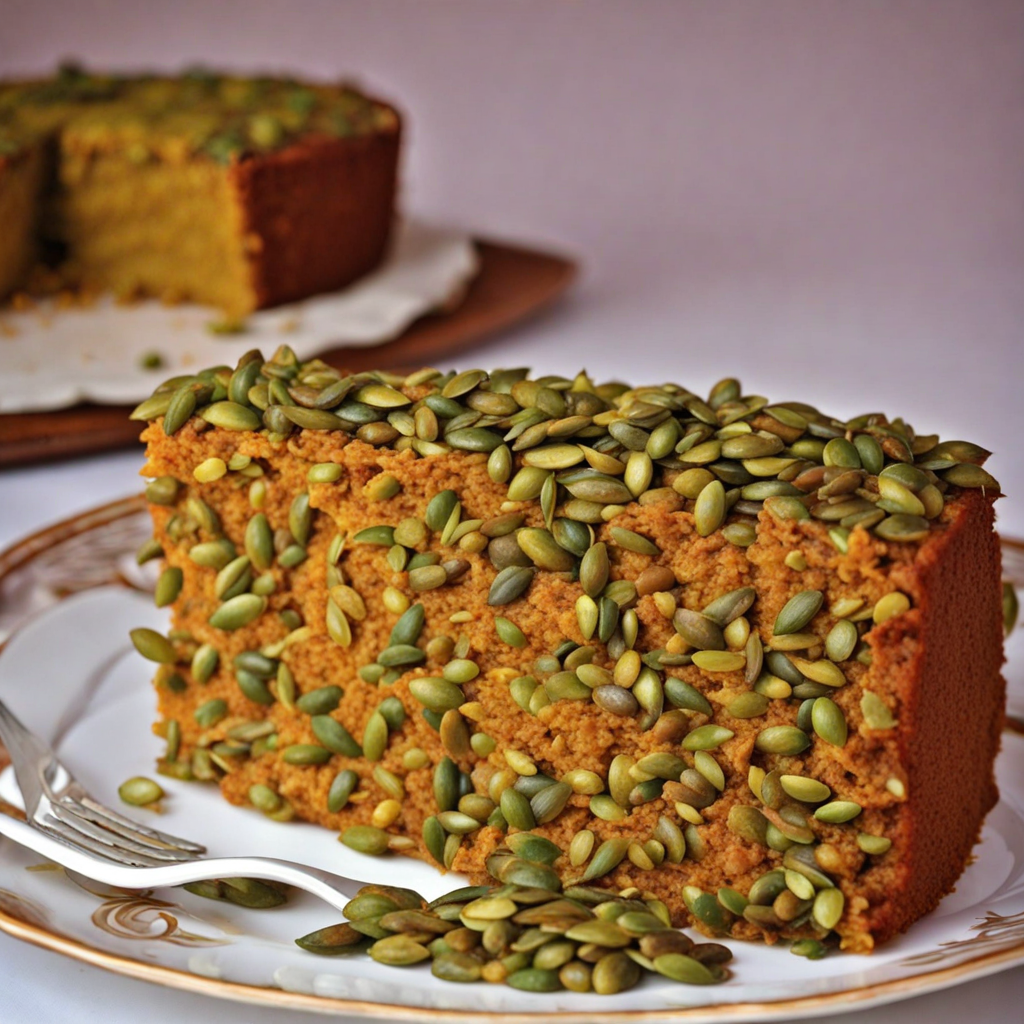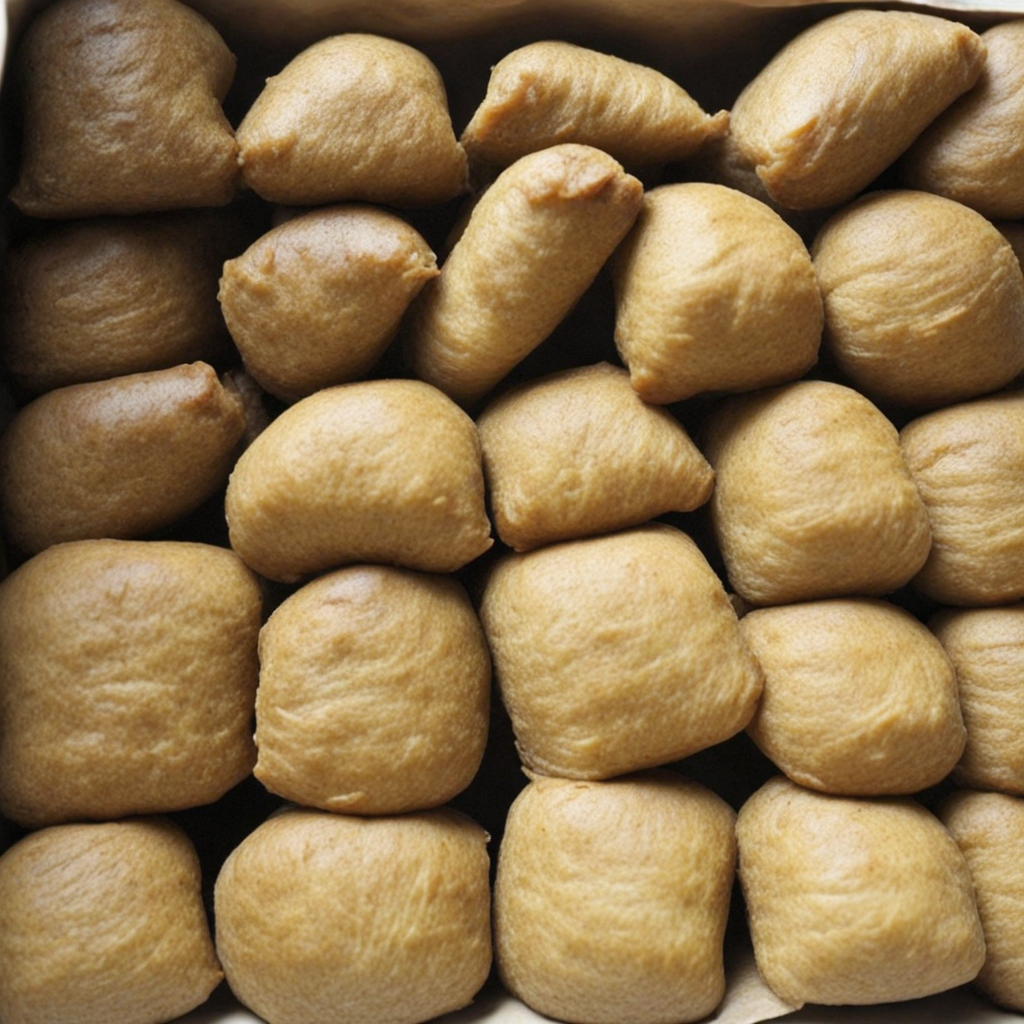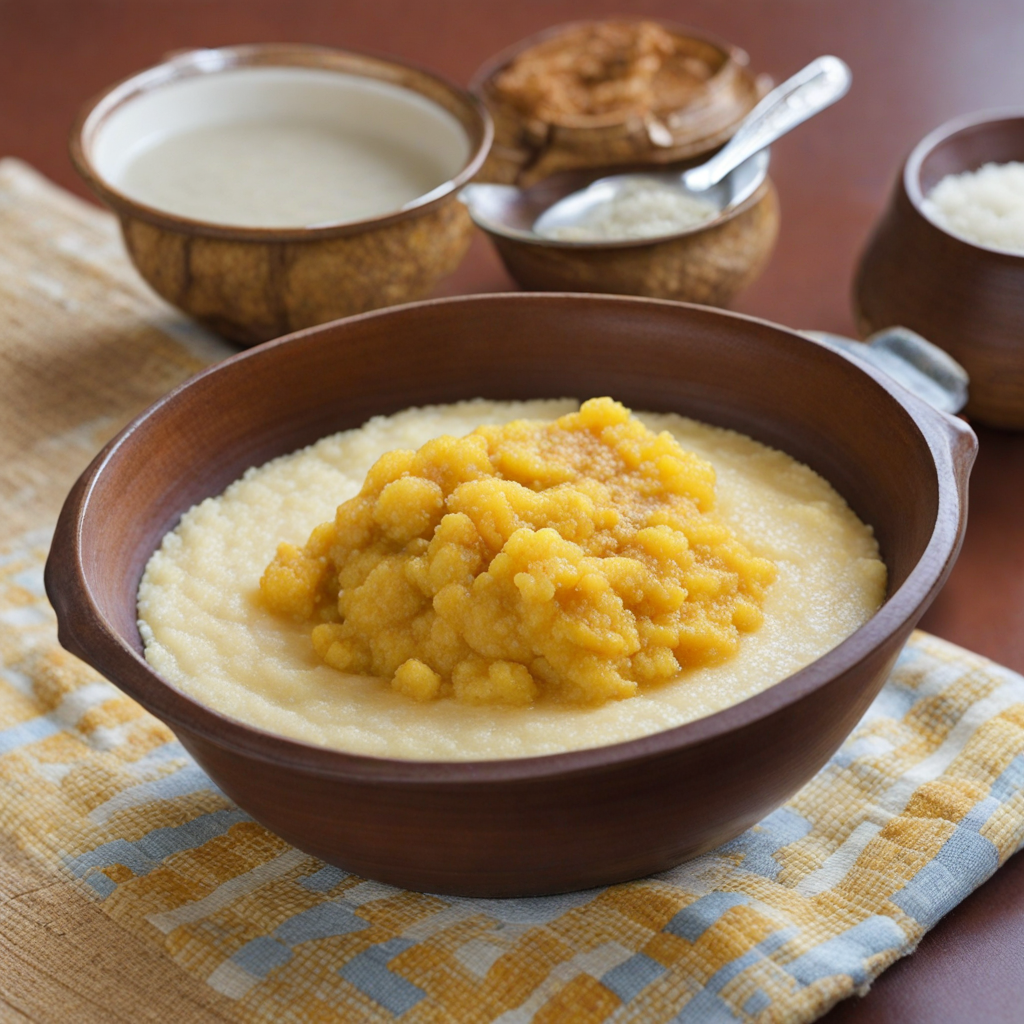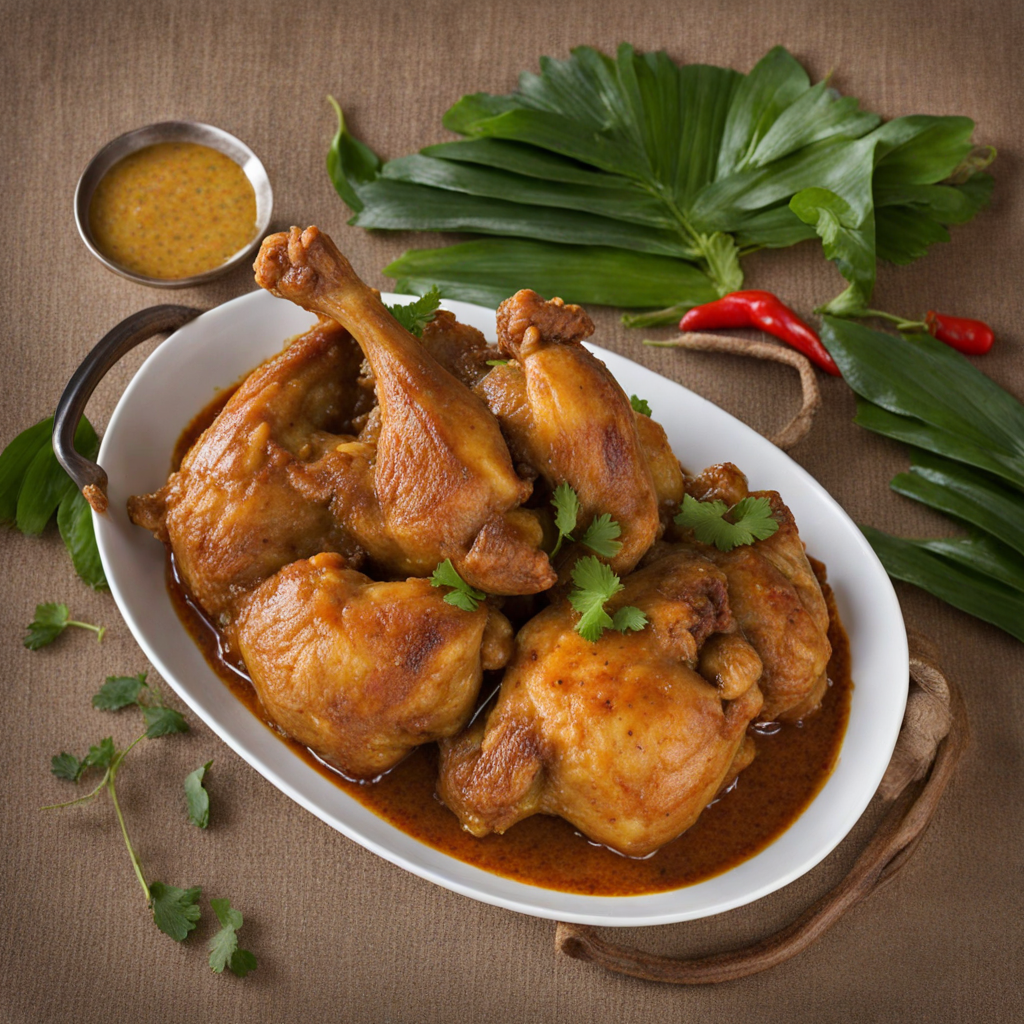Mbika
Mbika is a traditional dish from the Democratic Republic of the Congo, celebrated for its rich flavors and unique preparation methods. This delectable meal is primarily made from cassava leaves, which are finely chopped and cooked down to a tender texture. The leaves are often combined with ground peanuts or palm oil, creating a creamy, nutty base that enhances the dish's overall taste. The combination of cassava leaves and peanut paste not only provides a vibrant color but also enriches the dish with essential nutrients, making it a wholesome choice for a satisfying meal. In addition to the base ingredients, Mbika can be further elevated with the addition of fish or meat, such as smoked catfish or chicken, which imparts a smoky depth to the flavors. Seasoned with various spices and herbs native to the region, the dish often carries hints of garlic, onion, and sometimes even a touch of chili for heat. The cooking process involves simmering the ingredients together, allowing the flavors to meld beautifully, resulting in a comforting and hearty dish that reflects the culinary heritage of the Congolese people. Traditionally served with a side of fufu, a starchy staple made from fermented cassava or plantains, Mbika is often enjoyed as a communal dish, bringing friends and family together. The experience of enjoying Mbika is not just about the taste; it’s about the connection to the culture and the shared moments around the dining table. With its blend of earthy flavors, creamy texture, and nutritional benefits, Mbika is a delightful discovery for anyone looking to explore the diverse cuisines of Africa.
How It Became This Dish
The History of Mbika: A Culinary Jewel of the Democratic Republic of the Congo #### Origins of Mbika Mbika, also known as "Mbika ya nguba," is a traditional dish originating from the Democratic Republic of the Congo (DRC), a nation characterized by its rich cultural tapestry and diverse culinary traditions. The dish primarily consists of groundnut or peanut paste that is mixed with various ingredients, such as vegetables, fish, or meat, and is often served with a starchy side like fufu (a dough-like food made from cassava or maize) or rice. Peanuts, the fundamental ingredient of Mbika, are believed to have been introduced to Africa by Portuguese traders in the 16th century. Although native to South America, peanuts adapted remarkably well to the African climate and soon became a staple crop in many regions, including the DRC. The growing popularity of peanuts among Congolese communities spurred the creation of various dishes, with Mbika emerging as a delicious way to highlight the nut's versatility and flavor. #### Cultural Significance Mbika is more than just a meal; it is a dish laden with cultural significance in Congolese society. In the DRC, food is deeply intertwined with community and family life. Meals are often communal events where family members gather to share not only food but also stories, laughter, and traditions. Mbika, with its rich flavors and nourishing qualities, serves as a centerpiece in many gatherings, celebrations, and rituals. In traditional Congolese culture, the preparation and sharing of food have symbolic meanings. Mbika, prepared from scratch, often involves the collective efforts of family members, reinforcing bonds and fostering a sense of unity. The act of grinding peanuts, whether by hand or using a stone mortar and pestle, is a time-honored tradition that is passed down through generations, imparting culinary knowledge and cultural identity to the younger members of the family. Moreover, Mbika transcends social classes in the DRC; it is enjoyed by people from all walks of life. This inclusivity is a testament to the dish's adaptability and the commonality of its ingredients, making it accessible to both urban and rural populations. Whether served at a lavish feast or a simple family dinner, Mbika represents the heart of Congolese hospitality. #### Development Over Time As the DRC has evolved, so too has the dish of Mbika. Historically, the ingredients used in Mbika were dictated by local availability and seasonal changes. In rural communities, the dish was typically prepared using freshly harvested peanuts, vegetables, and proteins sourced from local farms or rivers. Fish, often smoked or dried, adds depth and umami, while seasonal vegetables like cassava leaves, okra, and eggplant contribute color and nutrition. With the advent of urbanization and globalization in the late 20th and early 21st centuries, the culinary landscape of the DRC has undergone significant transformations. Urban centers, bustling with life, have introduced new culinary influences and ingredients that have reshaped traditional dishes like Mbika. Although the core recipe remains intact, it has adapted to incorporate elements from other cuisines, reflecting the dynamic nature of Congolese society. For instance, in metropolitan areas such as Kinshasa, the capital city, Mbika might be served with fried plantains or a spicy sauce, showcasing a blend of traditional and modern cooking techniques. The dish has also gained popularity in restaurants and among the diaspora, where it is often featured in cultural festivals and events designed to celebrate Congolese heritage. The globalization of food culture has allowed Mbika to reach international audiences, becoming a representative dish of Congolese cuisine. In recent years, the rise of food bloggers and influencers has further spotlighted Mbika, with many sharing recipes and stories that resonate with both Congolese and global audiences. This newfound attention has encouraged a revival of interest in traditional Congolese cooking, as people seek to reconnect with their roots through food. #### Modern Interpretations and Innovations The modern interpretations of Mbika demonstrate the dish's adaptability and relevance in contemporary society. Many chefs in the DRC and in Congolese communities abroad are experimenting with new ingredients and techniques while honoring the dish's traditional roots. For example, the use of organic or locally sourced peanuts has become popular, as has the incorporation of superfoods or alternative proteins for health-conscious diners. Moreover, as food sustainability gains traction globally, there is a growing movement within the DRC to promote traditional crops, including peanuts, which are not only nutritious but also environmentally resilient. This shift towards sustainable practices has encouraged many to return to traditional farming methods, further enriching the cultural significance of dishes like Mbika. Additionally, the ongoing dialogue about food security and nutrition in the DRC has highlighted the importance of dishes like Mbika, which are both nourishing and affordable. By promoting the consumption of locally grown ingredients, Mbika serves as a model for addressing food sovereignty and health challenges faced by many Congolese communities. #### Conclusion In summary, Mbika is not just a culinary delight; it embodies the spirit of the Democratic Republic of the Congo, reflecting its rich history, cultural significance, and dynamic evolution over time. From its origins as a simple dish made from locally sourced ingredients to its modern adaptations that embrace both tradition and innovation, Mbika continues to be a cherished part of Congolese life. As the world increasingly recognizes the importance of preserving culinary traditions, Mbika stands out as a symbol of resilience and unity, representing the enduring legacy of Congolese culture. Whether enjoyed at family gatherings, special occasions, or in the bustling streets of Kinshasa, Mbika will undoubtedly continue to nourish not only the body but also the soul of the Congolese people for generations to come.
You may like
Discover local flavors from Democratic Republic Of The Congo


